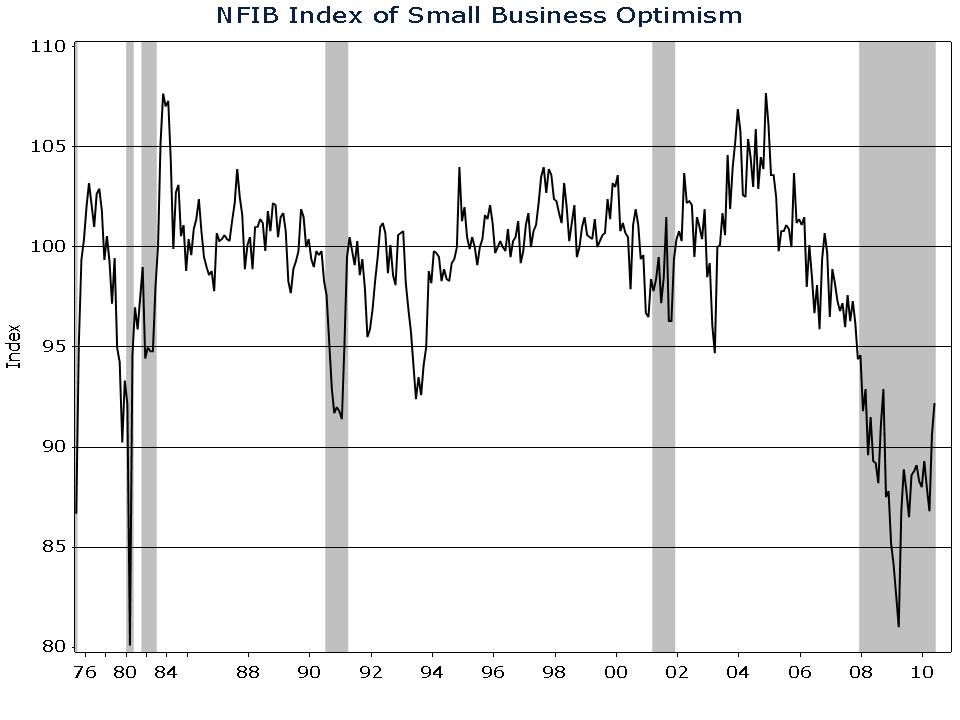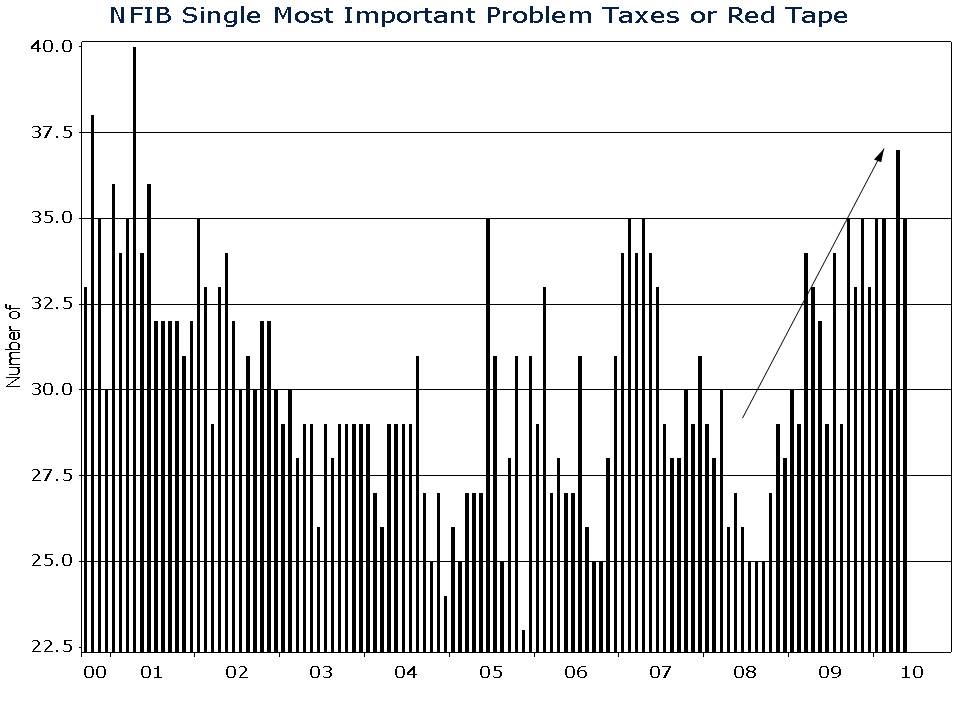The small business sector accounts for half of private-sector GDP and two-thirds of new job creation. You aren’t likely to see the current stimulus- and inventory-restocking-led recovery turn into a self-sustaining recovery without a strong small business sector. What is the current state of small business, and what does it mean for economic growth?
The best source of data on small business is the National Federation of Independent Business (NFIB). With 500,000 members, the NFIB is the nation’s leading small business organization. Each month, the NFIB sends thousands of NFIB members a questionnaire on current business conditions. The responses are compiled and released monthly in the NFIB Small Business Economic Trends report.
The most widely reported indicator from the NFIB Small Business Economic Trends report is the Index of Small Business Optimism. This indicator is a composite of 10 survey questions asked of NFIB members. The index provides a snapshot of small business conditions in the U.S. As you can see in the chart below, the index is up sharply from deeply depressed levels at the height of the credit crisis, but it remains in recession territory. With 30% of NFIB survey respondents citing poor sales as their single most important problem, a lack of demand is obviously part of the problem, but Washington is also to blame. NFIB members are reluctant to expand their businesses, partially owing to proposed legislation that would increase the cost of doing business and create great uncertainty. Of course, you won’t hear this from the administration or their allies in Congress. All you hear out of Washington is that tight credit conditions are to blame for lackluster growth in the small business sector. But with 35% of NFIB survey respondents reporting taxes or red tape as their single most important problem, tight credit conditions are a red herring. The bigger problem is Washington.
Recent trends in the NFIB data point to an improvement in the small business sector, but to really get this economy moving America needs lower taxes and less red tape. Unfortunately, that’s exactly the opposite of what continues to come out of Washington. A cautious stance on the durability of the recovery is still warranted.


